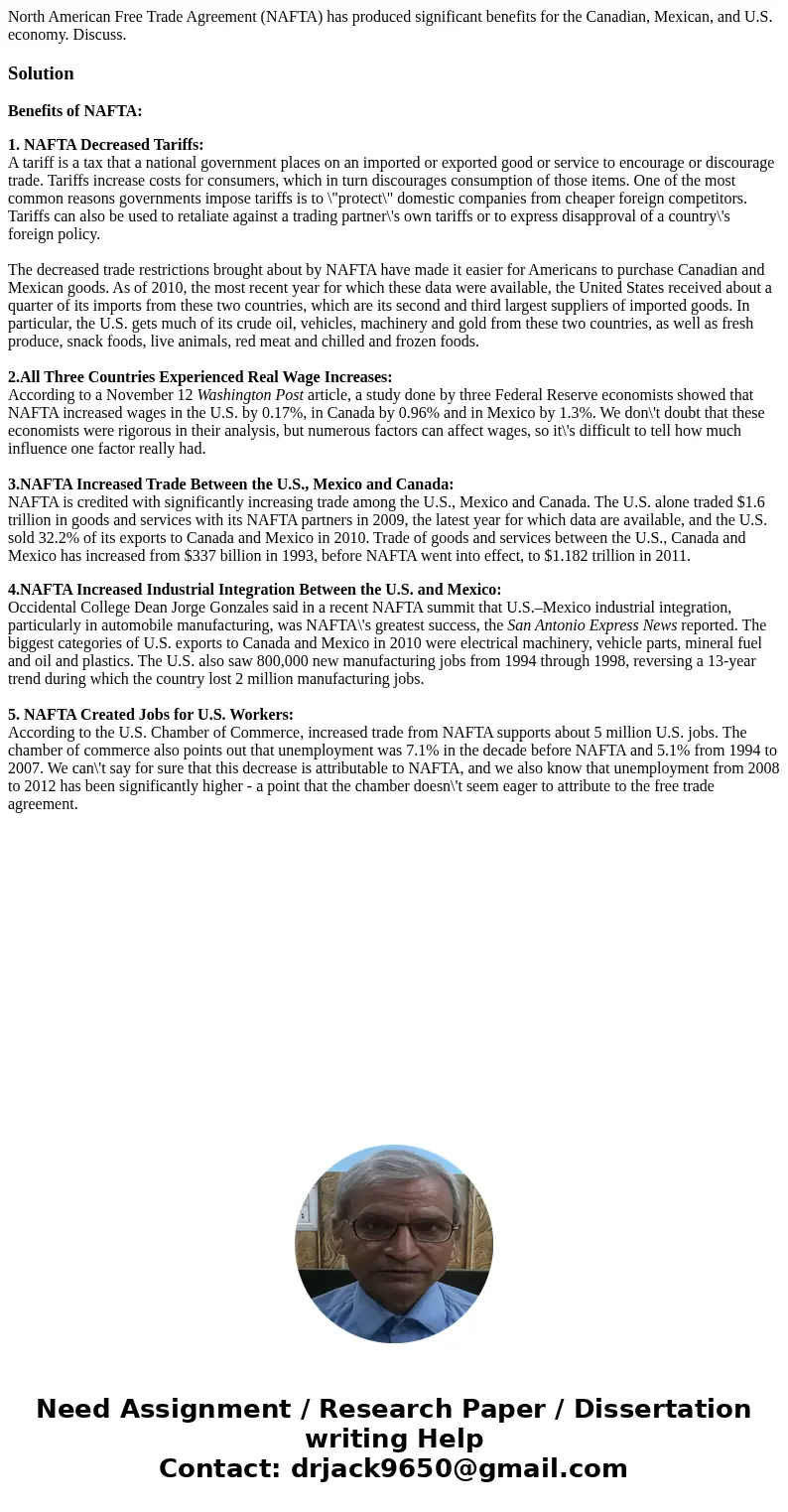North American Free Trade Agreement NAFTA has produced signi
North American Free Trade Agreement (NAFTA) has produced significant benefits for the Canadian, Mexican, and U.S. economy. Discuss.
Solution
Benefits of NAFTA:
1. NAFTA Decreased Tariffs:
A tariff is a tax that a national government places on an imported or exported good or service to encourage or discourage trade. Tariffs increase costs for consumers, which in turn discourages consumption of those items. One of the most common reasons governments impose tariffs is to \"protect\" domestic companies from cheaper foreign competitors. Tariffs can also be used to retaliate against a trading partner\'s own tariffs or to express disapproval of a country\'s foreign policy.
The decreased trade restrictions brought about by NAFTA have made it easier for Americans to purchase Canadian and Mexican goods. As of 2010, the most recent year for which these data were available, the United States received about a quarter of its imports from these two countries, which are its second and third largest suppliers of imported goods. In particular, the U.S. gets much of its crude oil, vehicles, machinery and gold from these two countries, as well as fresh produce, snack foods, live animals, red meat and chilled and frozen foods.
2.All Three Countries Experienced Real Wage Increases:
According to a November 12 Washington Post article, a study done by three Federal Reserve economists showed that NAFTA increased wages in the U.S. by 0.17%, in Canada by 0.96% and in Mexico by 1.3%. We don\'t doubt that these economists were rigorous in their analysis, but numerous factors can affect wages, so it\'s difficult to tell how much influence one factor really had.
3.NAFTA Increased Trade Between the U.S., Mexico and Canada:
NAFTA is credited with significantly increasing trade among the U.S., Mexico and Canada. The U.S. alone traded $1.6 trillion in goods and services with its NAFTA partners in 2009, the latest year for which data are available, and the U.S. sold 32.2% of its exports to Canada and Mexico in 2010. Trade of goods and services between the U.S., Canada and Mexico has increased from $337 billion in 1993, before NAFTA went into effect, to $1.182 trillion in 2011.
4.NAFTA Increased Industrial Integration Between the U.S. and Mexico:
Occidental College Dean Jorge Gonzales said in a recent NAFTA summit that U.S.–Mexico industrial integration, particularly in automobile manufacturing, was NAFTA\'s greatest success, the San Antonio Express News reported. The biggest categories of U.S. exports to Canada and Mexico in 2010 were electrical machinery, vehicle parts, mineral fuel and oil and plastics. The U.S. also saw 800,000 new manufacturing jobs from 1994 through 1998, reversing a 13-year trend during which the country lost 2 million manufacturing jobs.
5. NAFTA Created Jobs for U.S. Workers:
According to the U.S. Chamber of Commerce, increased trade from NAFTA supports about 5 million U.S. jobs. The chamber of commerce also points out that unemployment was 7.1% in the decade before NAFTA and 5.1% from 1994 to 2007. We can\'t say for sure that this decrease is attributable to NAFTA, and we also know that unemployment from 2008 to 2012 has been significantly higher - a point that the chamber doesn\'t seem eager to attribute to the free trade agreement.

 Homework Sourse
Homework Sourse